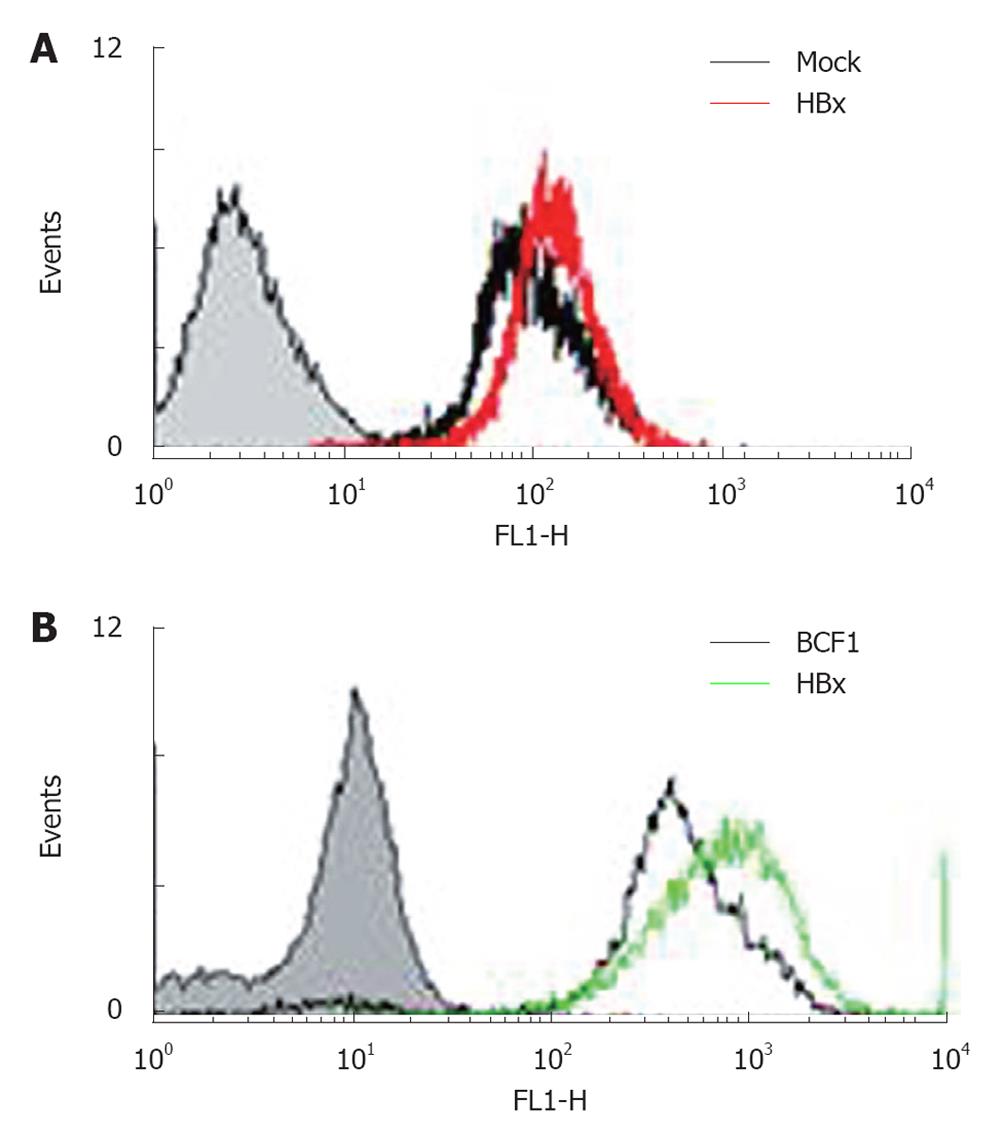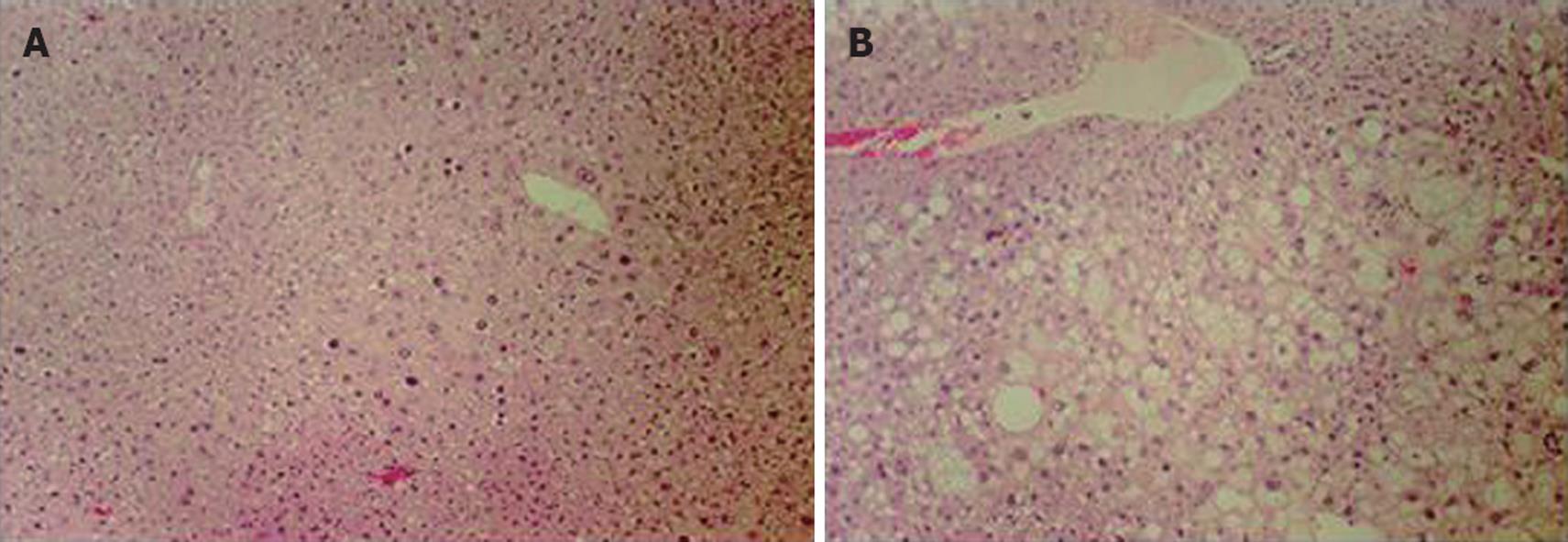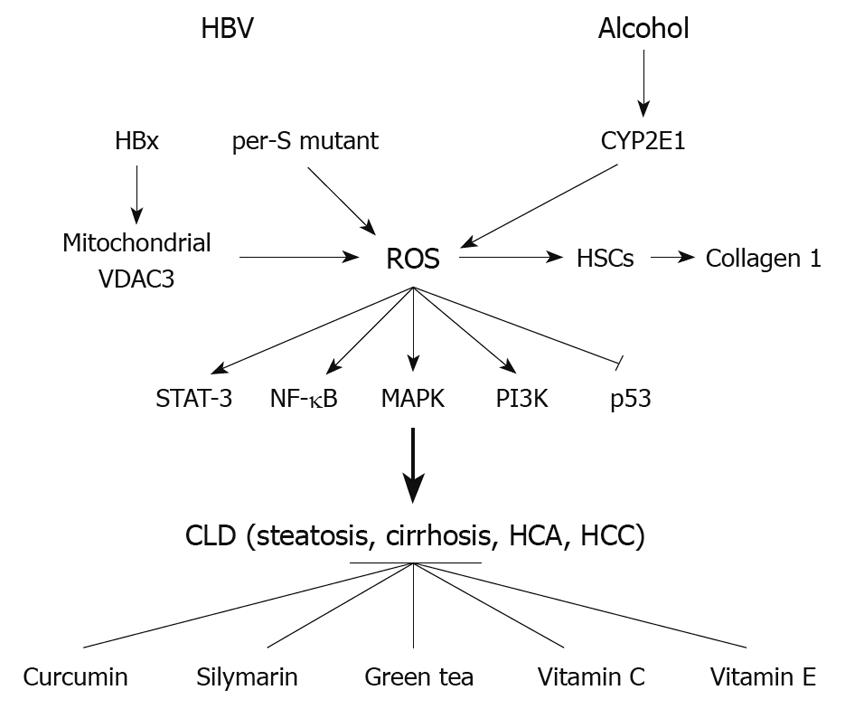Copyright
©2010 Baishideng Publishing Group Co.
World J Gastroenterol. Dec 28, 2010; 16(48): 6035-6043
Published online Dec 28, 2010. doi: 10.3748/wjg.v16.i48.6035
Published online Dec 28, 2010. doi: 10.3748/wjg.v16.i48.6035
Figure 1 Increased reactive oxygen species in hepatitis B virus X protein transfected HepG2 stable cell line and hepatitis B virus X protein transgenic mouse hepatocytes.
Reactive oxygen species (ROS) was detected by FACS caliber using dichlorofluorescein diacetate (DCFA-DA). A: HepG2 cell line stably transfected with hepatitis B virus X protein (HBx) showed a higher level of ROS compared to control cells; B: ROS production was checked after 4 wk of male HBx and control mouse hepatocyte growth. HBx mice hepatocytes generate more ROS than control mice.
Figure 2 Chronic ethanol consumption caused liver damage in hepatitis B virus X protein transgenic mice.
Ethanol fed hepatitis B virus X protein (HBx) tg mouse liver (B) showed severe liver damage, hepatocyte enlargement and fatty changes compared with water fed HBx (A). Original magnifications 100 ×.
Figure 3 Summary of hepatitis B virus and alcohol induced reactive oxygen species effects on chronic liver disease and antioxidant’s protective effects.
HBV: Hepatitis B virus; HBx: Hepatitis B virus X protein; VDAC3: Voltage-dependent anion channel 3; ROS: Reactive oxygen species; HSCs: Hepatic stellate cells; STAT-3: Transducer and activator of transcription 3; NF-κB: Nuclear factor κB; MAPK: Mitogen-activated protein kinase; PI3K: Phosphatidylinositol 3-kinase; CLD: Chronic liver disease; HCA: Hepatocellular adenoma; HCC: Hepatocellular carcinoma.
- Citation: Ha HL, Shin HJ, Feitelson MA, Yu DY. Oxidative stress and antioxidants in hepatic pathogenesis. World J Gastroenterol 2010; 16(48): 6035-6043
- URL: https://www.wjgnet.com/1007-9327/full/v16/i48/6035.htm
- DOI: https://dx.doi.org/10.3748/wjg.v16.i48.6035











